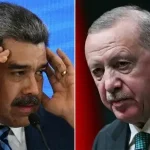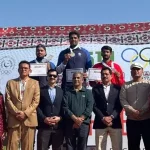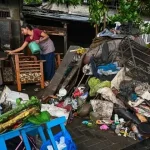Five a.m. and it’s mayhem in the Islamabad airport. Melancholy and excitement fight for attention. I am going back to northern Pakistan, my second home. I have been there so many times over the last 15 years, I have stopped counting the trips. Everything about this region has woken me up to the world, shaped me into a different person, more than any other place I have been to. The mountains are gigantic and treacherous, the people warm and touching.

The plane takes flight and we are off to the north, to the mountains. I sweet talk my way into the cockpit, chatting about camera equipment with the pilots while we graze by Nanga Parbat, which stands at over 26,000 feet. Suddenly, I recognize it—the wide valley with the sand dunes, below the high peaks, the town of Skardu in the distance.
It seems like yesterday I first lived here. 1999. I was just out of photography school, involved in a trekking company and trying to take meaningful pictures while working for an NGO. I see friends from way back then in the bazaar and hug them. Drinking chai after chai, we reunite. It’s like riding a bike—impossible to forget.

Eight hours in a jeep ride and we are in the Hunza valley. In the late 90’s, it was a hot destination for American and European trekkers. But September 11 pretty much eradicated tourism from this blessed land. Imagine high snowy peaks in the summer with lush green valleys below, endless fruit orchards, and a people whose hospitality is second nature. Yes, I mean blessed.

I am in the village of Hussaini. It’s winter. The icy Hunza River snakes its way slowly to a gigantic amphitheater of rock and gravel. Shades of gray are everywhere. It’s the color we wanted for that part of the assignment: a balance to the aquamarine waters of Borneo, the lush green of the Bolivian jungle, the ice blue of Greenland’s frozen tundra, the crimson red of the Kyrgyz costumes. Tupopdan, the “sun-drenched mountain,” edges its teeth to the sky. It’s Wakhi country, and I speak the local language. I feel right at home. Women come down to the river to bring water, hiking the steep path back up to the village. Some are back from fetching wood across the river. No wood, no cooking…I should check this out.

When I ask, the two women laugh out loud. “You want to join us? It’s so windy today! Ok, let’s get going then!” I am on a wood gathering mission with women that must be my grandmother’s age—Zamrad Begum and Nasib Sultan. This is going to be a workout alright—and these two are fit as hell! For 15 minutes, we walk atop the wide, dry riverbed, alongside the skeleton of a suspended bridge usually used in summer, when the melting glaciers turn the river into a swollen beast.
Last year, a gigantic landslide blocked the river down below, forming a lake that swallowed the bridge and the roads. “The lake cut us off from the rest of the world really. No food trucks could come up to us. But we are mostly self-sufficient, so that was ok. The real problem was getting to schools and hospitals.”

We climb up to the other side reaching Zor Abad, a quiet orchard in its winter slumber. There are sea buckthorn bushes around, ready to be cut, but Zamrad explains the rotational system: “You can’t cut here, this needs to rest for a year. Let’s get higher. Come on my brother!”
A couple of chukar birds cackle away above us. Nasib spits in her hand and grabs her axe, swinging at the thorny brush while talking in Wakhi. “There it is, nice wood for my home! That’s some nice wood for my home!” Zamrad grabs the thorny branches with her bare hands and piles them up high, tying them with a rope. Nasib laughs, “Dear Zamrad, such a beautiful thing you are doing, a nice bundle, a real jewel, like a bead of your necklace!” Another 30 minutes of hard work, they run down the mountain, loaded with wood, meeting up with other women, daughters and granddaughters. All the way home they chat between bouts of laughter, making fun of the village men, singing songs about “Bulbul”, the famous nightingale. I puff along behind, eating their dust.

By now, I am famished. My stomach tells me to follow this gang of women into the village. A man greets me and joins our crowd. He is in his early 40’s and just too cool for school, a local hipster it seems: blue jeans, moccasins, a down jacket, Ray Bans, and a row of blinding white teeth directly out of a Colgate commercial. “My name is Sher Aziz, I am the religious leader here. The women are asking if you are hungry,” he says. “Please be kind enough to join us. Let’s have chai and eat!”

That’s one thing I haven’t been worried about: getting invited into people’s homes. A dusty trail leads us through agricultural fields. Everything is at rest, waiting for spring. “Next week, we will start to put manure”, Sher Aziz goes on. We follow frozen irrigation channels. “Our ancestors! They did all this—leveled the fields, removed the stones, built these walls. And water … they channeled it all the way up from that glacier, no machines! It’s hard work but we live to be old and happy.”
We walk into Zamrad’s home, passing a sleepy donkey. People gather around the dildung, the central fireplace, and I am asked to sit by the loop raj, the honorific place near the fire, away from the door. Fading light falls gently on the women from an opening in the roof. With the rasp of a match striking and a couple of gentle blows, the first flames light up the house.

“See, fire is where it all starts, it’s the way to the stomach.” Zamrad sits on the floor, next to me. “In this season, we eat a lot of shhikerkutz hoi (potatoes mixed with fenugreek.) And no meal goes without chapati, our daily bread.”
“And where do all these vegetables come from?” I ask. Zamrad points to a side of the house. “Behind that wall, from our field, where else?” I’ve heard it said the enemy of food is miles. Here, proximity is the key to survival.





